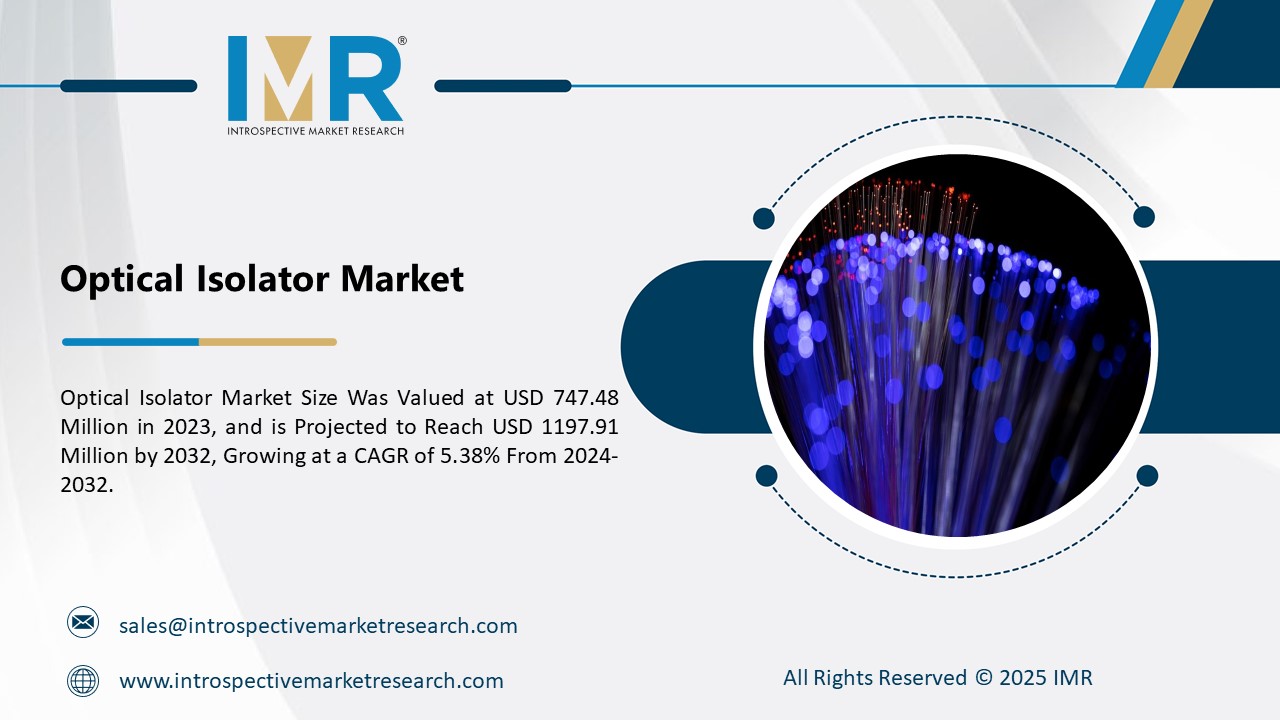Telecom Energy Management System Market
According to a new report published by Introspective Market Research, titled, “Telecom Energy Management System Market by Application and Packaging Type: Global Opportunity Analysis and Industry Forecast, 2024–2032,”
the global Telecom Energy Management System market size was valued at $ 50.91 Billion in 2023, and is projected to reach $ 206.12 Billion by 2032, registering a CAGR of 16.81% from 2024 to 2032.
A Telecom Energy Management System (TEMS) is a specialized solution designed to optimize energy consumption and enhance energy efficiency within telecommunication networks. It integrates hardware and software to monitor, control, and manage the power usage of telecom equipment, such as base stations, data centers, and network infrastructure. By leveraging real-time data analytics, automation, and advanced algorithms, TEMS aims to reduce operational costs, minimize carbon footprint, and ensure reliable power supply. This system plays a critical role in achieving sustainable operations and supporting the telecom industry's commitment to environmental responsibility and energy efficiency.
The global Telecom Energy Management System (TEMS) market is experiencing significant growth driven by the increasing demand for energy efficiency and sustainability within the telecommunications sector. With the rapid expansion of telecom infrastructure, including 5G deployment, data centers, and network densification, there is a heightened need for effective energy management solutions. TEMS offers substantial benefits such as cost savings, reduced carbon emissions, and improved operational reliability. Key market players are investing in advanced technologies like IoT, AI, and machine learning to enhance TEMS capabilities. Additionally, regulatory pressures and corporate sustainability goals are further propelling market growth, making TEMS a critical component of modern telecom operations.
According to the global Telecom Energy Management System market analysis, the market segmented into Component, Application, and region. By Component, the market is categorized into Sensors, Controllers, and Software. By Application, the market is categorized into Energy Monitoring, Reporting & Analytics, Power Optimization, and Predictive Maintenance. By region, it is analyzed across North America (U.S.; Canada; Mexico), Eastern Europe (Bulgaria; The Czech Republic; Hungary; Poland; Romania; Rest of Eastern Europe), Western Europe (Germany; UK; France; Netherlands; Italy; Russia; Spain; Rest of Western Europe), Asia-Pacific (China; India; Japan; Southeast Asia, etc.), South America (Brazil; Argentina, etc.), Middle East & Africa (Saudi Arabia; South Africa, etc.).
The rapid deployment of 5G networks is a significant driver for the Telecom Energy Management System market. As telecom operators expand their infrastructure to support 5G technology, energy consumption increases substantially. TEMS helps manage and optimize this energy usage, reducing operational costs and minimizing environmental impact. The need for efficient energy management solutions in this high-growth environment is crucial for maintaining profitability and meeting regulatory requirements.
The rapid deployment of 5G networks is a significant driver for the Telecom Energy Management System market. As telecom operators expand their infrastructure to support 5G technology, energy consumption increases substantially. TEMS helps manage and optimize this energy usage, reducing operational costs and minimizing environmental impact. The need for efficient energy management solutions in this high-growth environment is crucial for maintaining profitability and meeting regulatory requirements.
Global Telecom Energy Management System Market, Segmentation
The Telecom Energy Management System market is segmented on the basis of Component, Application, and region.
Packaging Type:
The Software segment is set to lead the Telecom Energy Management System (TEMS) market expansion due to the rising demand for advanced software solutions that effectively monitor, analyze, and optimize energy usage within telecommunications infrastructure. TEMS software offers features like real-time data monitoring, predictive analytics, and energy optimization algorithms, enabling telecom companies to manage energy consumption efficiently and reduce operational costs. The growing adoption of cloud-based TEMS solutions further drives this segment's dominance, offering scalability, flexibility, and easy deployment. Additionally, integrating AI and machine learning enhances the software's predictive and optimization capabilities. As telecom firms prioritize energy efficiency and cost reduction, the demand for sophisticated TEMS software solutions is expected to rise significantly, solidifying the Software segment's market leadership.
Application:
The Energy Monitoring segment has driven the growth of the Telecom Energy Management System (TEMS) market, capturing the largest share due to its crucial role in enabling effective monitoring and analysis of energy usage for telecom companies. These solutions offer features like real-time data monitoring, metering, and visualization tools, allowing telecom operators to analyze energy consumption patterns and identify improvement areas. The segment's dominance is further fueled by the growing demand for energy-efficient solutions and regulatory compliance requirements. Telecom companies are investing in advanced monitoring solutions to track energy usage, reduce operational costs, and minimize environmental impact. Additionally, integrating Energy Monitoring solutions with other TEMS components, such as analytics and optimization tools, enhances functionality, providing a comprehensive approach to energy management. As telecom firms prioritize energy efficiency and sustainability, the Energy Monitoring segment is expected to maintain its leading position in driving TEMS market growth.
Region:
The Asia Pacific region is set to spearhead the growth of the Telecom Energy Management System (TEMS) market, emerging as the primary growth hub due to the rapid expansion of its telecommunications sector and a strong focus on energy efficiency and sustainability. The region's economic growth and urbanization are driving increased demand for telecom services, highlighting the need for efficient energy management solutions. Government initiatives promoting renewable energy and energy efficiency, alongside policies aimed at reducing carbon emissions, further boost TEMS market growth in Asia Pacific. The presence of major market players and technological advancements in countries like China, Japan, and India also contribute to the region's leading position. As telecom companies in Asia Pacific prioritize energy management and sustainability, the region is expected to continue its dominance in the TEMS market.
Some of the leading Telecom Energy Management System market players are
- IBM Corporation (U.S.)
- Rockwell Automation, Inc. (U.S.)
- General Electric (U.S.)
- Johnson Controls (U.S.)
- Honeywell International (U.S.)
- Gridpoint (U.S.)
- C3.ai, Inc. (U.S.)
- Vertiv Co. (U.S.)
- Cummins Inc (U.S.)
- Siemens AG (Germany)
- Elster Energy (Germany)
- Eaton (Ireland)
- Schneider Electric SE (France)
- Huawei Technologies Co., Ltd (China), and Other Major Players
Key Industry Developments:
- In March 2023, Schneider Electric is constructing a 25,000 m2 smart factory in Dunavesce, Hungary, with a planned investment of EUR 40 million. The facility will increase capacity to meet increased demand as Europe moves towards energy transition and energy independence.
- In December 2023, Johnson Controls the global leader for smart, healthy, and sustainable buildings, announced it was named a leader in energy management software by independent industry analyst firm Verdantix.
Key Findings of the Study:
- The global Telecom Energy Management System (TEMS) market, valued at $50.91 billion in 2023, is projected to reach $206.12 billion by 2032, with a robust CAGR of 16.81% from 2024 to 2032. This growth is driven by increasing demand for energy efficiency and sustainability in the telecommunications sector.
- The Software segment is anticipated to lead the market expansion due to rising demand for advanced software solutions that offer real-time data monitoring, predictive analytics, and energy optimization. Cloud-based solutions and AI integration further enhance the software's capabilities, driving its dominance.
- The Energy Monitoring segment holds the largest market share, crucial for effective monitoring and analysis of energy usage in telecom operations. Features such as real-time data monitoring, metering, and visualization tools are pivotal in helping telecom operators improve energy efficiency and meet regulatory requirements.








